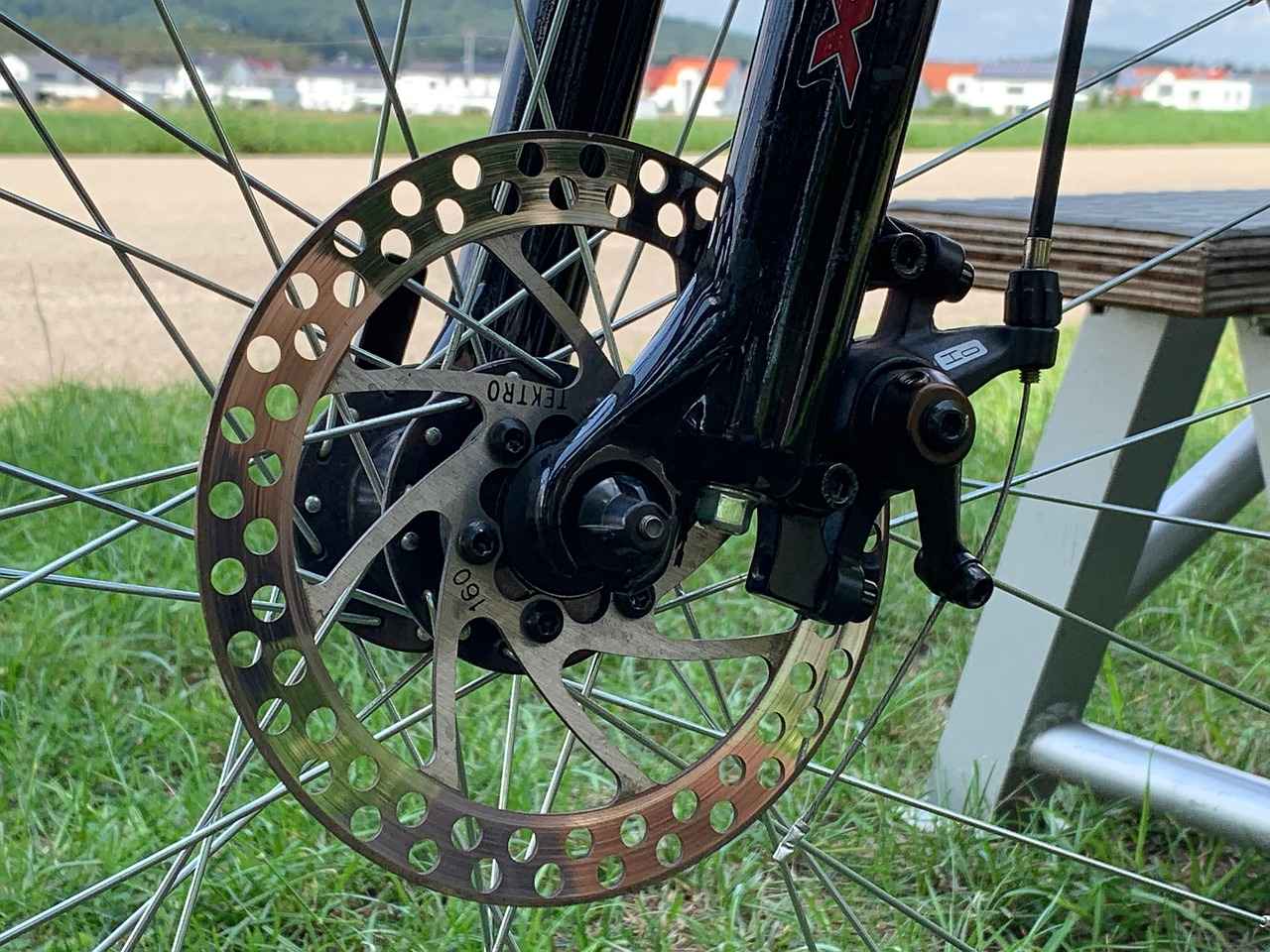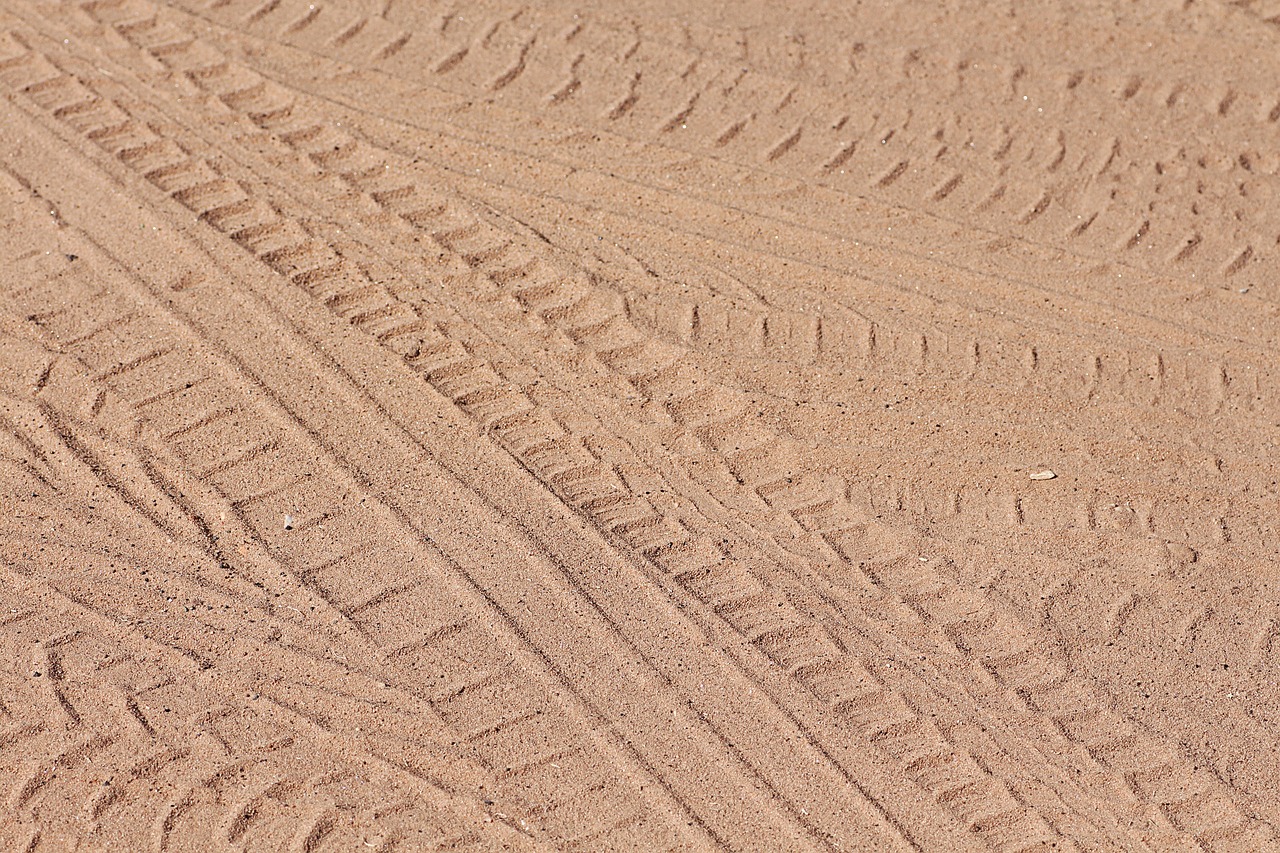In this article, we will provide a detailed guide on how to change brake pads for a Honda Accord, ensuring safety and efficiency in your vehicle maintenance. Regular maintenance of your brake system is vital for optimal performance and safety on the road. Understanding the process of changing brake pads can save you time and money, while also enhancing your vehicle’s braking capabilities.
What Are the Signs You Need to Change Brake Pads?
Recognizing the warning signs that indicate the need for brake pad replacement is essential. Common indicators include:
- Squeaking or squealing noises when braking
- Reduced braking power or longer stopping distances
- Vibration or pulsation in the brake pedal
- Dashboard warning lights indicating brake issues
What Tools Do You Need for the Job?
Before starting the brake pad replacement, gather the following essential tools:
- Lug wrench
- Socket set
- Brake cleaner
- C-clamp
Having the right tools ensures a smoother and safer process, minimizing the risk of accidents during the replacement.
How to Prepare Your Honda Accord for Brake Pad Replacement?
Preparation is key to a successful brake pad change. Start by:
- Securing your vehicle on a flat surface
- Engaging the parking brake
- Loosening the lug nuts on the wheels
- Lifting the car with a jack
How to Remove the Wheel and Brake Caliper?
Removing the wheel and brake caliper is crucial for accessing the brake pads. Follow these steps:
- Step 1: Loosen the lug nuts and lift the vehicle with a jack.
- Step 2: Remove the lug nuts completely and take off the wheel to expose the brake assembly.
- Step 3: Locate the caliper bolts and use the appropriate socket to remove them.
- Step 4: Carefully slide the caliper off the rotor without damaging any components.
How to Remove Old Brake Pads?
Once the caliper is removed, you can access the old brake pads. Carefully slide them out from their position, taking note of their orientation for proper installation of the new pads.
How to Install New Brake Pads?
Installing new brake pads requires attention to detail. Ensure that the new pads are correctly positioned in the caliper bracket, following the same orientation as the old pads for optimal performance.
How to Use a C-Clamp for Installation?
A C-clamp is essential for compressing the caliper piston. This step is necessary to create enough space for the new, thicker brake pads, ensuring they fit properly within the caliper. To use a C-clamp:
1. Place one end of the clamp against the back of the caliper.2. Position the other end against the piston.3. Slowly tighten the clamp until the piston is fully compressed.
What to Check Before Reassembling the Brake System?
Before reassembling, inspect the brake rotor for wear and damage. Clean the rotor with brake cleaner and check for any debris that may affect braking performance after installation.
How to Reinstall the Brake Caliper and Wheel?
Reinstalling the brake caliper and wheel is the final step in the brake pad replacement process. Ensure that all bolts are tightened to the manufacturer’s specifications for safety. Follow these steps:
- Reattach the caliper over the new pads.
- Tighten the caliper bolts securely.
- Place the wheel back onto the hub.
- Hand-tighten the lug nuts before lowering the vehicle.
How to Test Your Brakes After Replacement?
Testing your brakes after replacement is crucial for safety. Start the vehicle and gently press the brake pedal to ensure proper function. Check for any unusual noises or sensations before driving. It’s advisable to take a short test drive to ensure everything is functioning correctly.

What Are the Signs You Need to Change Brake Pads?
When it comes to vehicle maintenance, understanding the warning signs that indicate the need for brake pad replacement is crucial for ensuring both safety and performance. Brake pads are essential components of your vehicle’s braking system, and recognizing the indicators of wear can help prevent more serious issues down the line. Here are some common signs you should be aware of:
- Squeaking or Squealing Noises: One of the most noticeable signs that your brake pads need replacing is a high-pitched squeaking or squealing sound when you apply the brakes. This noise typically indicates that the brake pads have worn down to a level where the wear indicators are making contact with the brake rotor.
- Grinding Noises: If you hear a grinding noise when braking, this can be a sign that your brake pads are completely worn out. This sound occurs when the metal backing of the brake pads makes contact with the rotor, which can cause significant damage to the braking system if not addressed promptly.
- Reduced Braking Power: If you notice that your vehicle takes longer to stop than it used to, this could indicate that your brake pads are wearing thin. Reduced braking power can be dangerous, especially in emergency situations.
- Vibration or Pulsation: When applying the brakes, if you feel a vibration or pulsation in the brake pedal, it may be a sign that the brake pads are unevenly worn or that the rotors are warped. This can affect your vehicle’s stopping ability and should be investigated immediately.
- Dashboard Warning Lights: Many modern vehicles are equipped with sensors that alert you when brake pads are worn. If you see a warning light on your dashboard, it’s important to check your brake system as soon as possible.
- Visual Inspection: Regularly inspecting your brake pads can also help you determine if they need replacing. If you can see that the pads are less than 1/4 inch thick, it’s time to change them.
Being aware of these signs can help you maintain your vehicle’s braking system effectively. Regular maintenance and timely replacement of brake pads not only enhance your safety but also improve the overall performance of your Honda Accord. If you experience any of these symptoms, it’s advisable to consult with a professional mechanic to evaluate the condition of your brake pads and other related components.
In summary, understanding the signs that indicate the need for brake pad replacement is essential for every vehicle owner. By paying attention to unusual noises, changes in braking performance, and dashboard alerts, you can ensure that your Honda Accord remains safe and reliable on the road.

What Tools Do You Need for the Job?
When it comes to performing a brake pad replacement on your Honda Accord, having the right tools is essential for a successful and safe experience. Below, we will outline the necessary tools you need to gather before starting the job, ensuring you are well-prepared.
Before diving into the brake pad replacement process, it is crucial to assemble a comprehensive set of tools. This preparation not only enhances efficiency but also minimizes risks during the procedure. Here is a list of the essential tools you should have:
- Lug Wrench: This tool is vital for loosening and tightening the lug nuts on your wheels. A cross-shaped lug wrench is often preferred for better leverage.
- Socket Set: A good quality socket set will allow you to remove the brake caliper bolts and any other necessary components. Make sure to have both metric and standard sizes available.
- Brake Cleaner: This solvent is essential for cleaning the brake components, including the rotors and calipers, ensuring that dirt and debris do not interfere with the braking system.
- C-Clamp: A C-clamp is crucial for compressing the caliper piston. This step is necessary to create adequate space for the new brake pads, which are typically thicker than the old ones.
- Jack and Jack Stands: A hydraulic jack is needed to lift your vehicle safely, while jack stands provide additional support and safety when working underneath the car.
- Torque Wrench: This tool ensures that all bolts are tightened to the manufacturer’s specifications, which is critical for the safety and performance of your brakes.
- Gloves and Safety Glasses: Protecting yourself is paramount. Wearing gloves will keep your hands clean and safe from sharp edges, while safety glasses will shield your eyes from debris.
By gathering these tools beforehand, you will create a smoother and safer process for replacing your brake pads. Having everything within reach will allow you to focus on the task at hand without unnecessary interruptions.
In addition to these tools, it is also beneficial to have a repair manual specific to your Honda Accord model. This manual will provide detailed instructions and specifications, helping you navigate the brake pad replacement process with confidence.
Ultimately, being well-prepared with the right tools and knowledge will not only enhance your efficiency but also ensure that your brake pad replacement is completed safely and effectively. Remember, taking the time to gather the necessary equipment is the first step toward a successful brake job.

How to Prepare Your Honda Accord for Brake Pad Replacement?
Preparation is key to a successful brake pad change for your Honda Accord. This process not only ensures your safety but also enhances the efficiency of the brake system. To start, it’s essential to find a flat and stable surface for your vehicle. This minimizes the risk of accidents while you work. Next, engage the parking brake to prevent the car from rolling during the procedure.
Before lifting the vehicle, it’s advisable to loosen the lug nuts on the wheels. This step is critical as it allows for easier removal of the wheel once the car is elevated. Use a lug wrench to turn the nuts counterclockwise, but do not remove them completely at this stage.
Once the lug nuts are loosened, you can proceed to lift the car using a jack. Ensure that the jack is positioned at the designated lifting points of your Honda Accord to avoid damaging the vehicle. After lifting, securely place jack stands under the vehicle for added safety. This precaution is vital, as it provides support in case the jack fails.
After securing the vehicle, fully remove the lug nuts and take off the wheel to expose the brake assembly. It’s important to keep the lug nuts in a safe place, as you will need them later during reassembly. With the wheel off, you can now access the brake caliper and the pads.
Before you begin removing the brake components, take a moment to inspect the area for any signs of wear or damage. Look for leaks, cracks, or any other issues that could affect braking performance. If everything appears in order, you’re ready to proceed with the removal of the brake caliper.
In summary, proper preparation for changing your Honda Accord’s brake pads involves:
- Finding a flat and stable surface.
- Engaging the parking brake.
- Loosening the lug nuts before lifting the vehicle.
- Using a jack and jack stands for safety.
- Inspecting the brake components for any damage.
By following these steps, you set a solid foundation for a successful brake pad replacement, ensuring both your safety and the longevity of your vehicle’s braking system.

How to Remove the Wheel and Brake Caliper?
When it comes to vehicle maintenance, understanding the process of removing the wheel and brake caliper is essential for accessing the brake pads effectively. This task is not only vital for brake pad replacement but also ensures your vehicle’s braking system operates safely and efficiently. Below, we outline a systematic approach to this process, emphasizing safety and preventing damage to your vehicle’s components.
Removing the wheel and brake caliper is a critical step in the brake pad replacement process. It allows you to access the brake pads directly, facilitating their removal and installation. Additionally, this process enables you to inspect other components of the braking system, such as the rotors and calipers, for wear and damage.
- Secure the Vehicle: Start by parking your Honda Accord on a flat surface and engaging the parking brake. This ensures the vehicle remains stable during the process.
- Loosen Lug Nuts: Using a lug wrench, loosen the lug nuts slightly while the wheel is still on the ground. This prevents the wheel from spinning when you lift the vehicle.
- Lift the Vehicle: Utilize a jack to lift the vehicle securely. Always ensure the jack is placed on a solid part of the frame to avoid accidents.
- Remove the Wheel: Once the vehicle is elevated, completely remove the loosened lug nuts and take off the wheel to expose the brake assembly.
- Locate Caliper Bolts: With the wheel removed, locate the bolts securing the brake caliper. These are typically found on the back side of the caliper.
- Remove Caliper Bolts: Using the appropriate socket, carefully remove the caliper bolts. It’s important to keep these bolts in a safe place for reinstallation.
- Slide Off the Caliper: Gently slide the caliper off the rotor. Be cautious not to damage the brake line attached to the caliper. If necessary, use a bungee cord to hang the caliper from the suspension to avoid stress on the brake line.
- Wear Protective Gear: Always wear safety glasses and gloves to protect yourself from debris and sharp edges.
- Check for Damage: Inspect the brake components for any signs of wear or damage as you work. This can prevent future issues and ensure optimal performance.
- Follow Manufacturer Guidelines: Always refer to your vehicle’s manual for specific instructions and torque specifications when removing and reinstalling components.
After successfully removing the brake caliper, you will have access to the brake pads. This is the perfect time to inspect the pads and rotors for wear. If the pads are worn down, replace them with new ones. Ensure that the new pads are installed in the same orientation as the old ones for proper functionality.
In conclusion, removing the wheel and brake caliper is a straightforward process that, when done correctly, can enhance your vehicle’s braking performance and safety. Always prioritize safety and follow the correct procedures to ensure a successful brake pad replacement.
Step-by-Step Guide to Removing the Wheel
When it comes to maintaining your Honda Accord, changing the brake pads is a vital task that ensures your vehicle operates safely and efficiently. One of the first steps in this process is to remove the wheel. This guide will provide you with a detailed step-by-step approach to do just that.
Removing the wheel is essential for accessing the brake assembly. Without taking off the wheel, you cannot reach the brake caliper or the brake pads. This step is critical in ensuring that you can replace your brake pads effectively.
- Lug Wrench: To loosen and remove the lug nuts.
- Jack: To lift the vehicle safely.
- Jack Stands: For added safety while working under the vehicle.
Follow these steps carefully to ensure a safe and efficient wheel removal:
- Loosen the Lug Nuts: Before lifting the vehicle, use a lug wrench to slightly loosen each lug nut. Turn them counterclockwise just enough so they can be removed by hand later.
- Secure the Vehicle: Ensure your Honda Accord is parked on a flat, stable surface. Engage the parking brake to prevent any movement while you work.
- Lift the Vehicle: Using a jack, carefully lift the vehicle until the tire is off the ground. Make sure the jack is placed at the appropriate jacking points specified in your vehicle’s manual.
- Insert Jack Stands: For safety, place jack stands under the vehicle to support it while you work. This step is crucial to prevent any accidents if the jack fails.
- Remove the Lug Nuts: Now that the vehicle is elevated and secure, completely remove the loosened lug nuts. Keep them in a safe place as you will need them to reattach the wheel later.
- Take Off the Wheel: Gently pull the wheel straight off the hub. If it feels stuck, you may need to tap it lightly with a rubber mallet to break the seal.
Once the wheel is removed, you will have clear access to the brake assembly, allowing you to proceed with the next steps in changing your brake pads. Always remember to handle tools and components with care to avoid any damage or injury.
- Always wear protective gear, such as gloves and safety goggles.
- Never work under a vehicle that is only supported by a jack.
- Double-check that the parking brake is engaged before lifting the vehicle.
By following these steps, you can confidently remove the wheel of your Honda Accord, paving the way for a successful brake pad replacement. Proper preparation and safety measures will ensure that your vehicle maintenance is both effective and safe.
Step-by-Step Guide to Removing the Brake Caliper
When it comes to maintaining your Honda Accord, changing the brake pads is an essential task that ensures your vehicle’s safety and performance. One of the critical steps in this process is removing the brake caliper, which allows you to access the brake pads. Below is a step-by-step guide to help you through this process efficiently.
Once the wheel is removed, the next step is to carefully remove the brake caliper. This process requires attention to detail to avoid damaging any components. Follow these steps:
- Locate the Caliper Bolts: After taking off the wheel, you will see the brake caliper mounted over the rotor. Look for the caliper bolts, which are typically found on the back side of the caliper.
- Select the Right Socket: Use the appropriate socket size to fit the caliper bolts. It’s essential to have the correct size to avoid stripping the bolts, which can lead to further complications.
- Remove the Caliper Bolts: With your socket wrench, carefully loosen and remove the caliper bolts. It’s advisable to apply steady pressure and avoid sudden movements to prevent damage.
- Support the Caliper: Once the bolts are removed, gently slide the caliper off the rotor. Be careful not to let it hang by the brake line, as this can cause damage. Instead, use a bungee cord or a piece of wire to secure it to the suspension components.
- Inspect the Components: Before proceeding to remove the old brake pads, take a moment to inspect the caliper and surrounding components for any signs of wear or damage. This will help ensure that everything is in good condition for reassembly.
By following these steps, you can successfully remove the brake caliper without damaging any components. This careful approach is vital for maintaining the integrity of your vehicle’s braking system. Always remember to work in a clean environment and keep your tools organized to enhance efficiency.
After the caliper is removed, you will have access to the brake pads, allowing you to proceed with their replacement. This is a crucial step in ensuring your Honda Accord continues to perform optimally on the road.

How to Remove Old Brake Pads?
Changing the brake pads on your Honda Accord is a critical maintenance task that ensures your vehicle’s safety and performance. In this section, we will focus on the process of removing old brake pads, a step that requires precision and care.
Once you have successfully removed the brake caliper, you will gain access to the old brake pads. This is a crucial step in the brake pad replacement process. Here is a detailed guide to help you:
- Inspect the Area: Before proceeding, take a moment to inspect the brake assembly for any signs of wear or damage. This can help you address any potential issues before installing new pads.
- Slide Out the Old Brake Pads: Carefully grasp the old brake pads and gently slide them out from their position. It is essential to do this slowly to avoid damaging the surrounding components.
- Note the Orientation: Pay close attention to the orientation of the old pads as you remove them. This will ensure that the new pads are installed in the correct position, which is vital for optimal braking performance.
- Check for Additional Components: In some cases, you may find shims or clips attached to the old pads. Make sure to remove these components as well, as they may need to be transferred to the new pads or replaced altogether.
Throughout this process, it is important to handle all components with care. Avoid using excessive force, as this could lead to damage. If the pads seem stuck, consider using a brake cleaner to help loosen them up. Additionally, be mindful of any brake dust that may be present, as it can be harmful if inhaled. Wearing a mask and gloves is advisable.
After successfully removing the old brake pads, take a moment to clean the caliper bracket and rotor surface with brake cleaner. This step will help ensure a clean installation of the new pads, promoting better contact and performance.
In summary, removing old brake pads is a straightforward process that requires attention to detail. By following these steps and being mindful of the components involved, you can prepare your Honda Accord for the installation of new brake pads, ultimately enhancing your vehicle’s braking performance.

How to Install New Brake Pads?
Installing new brake pads is a critical task that requires attention to detail. Proper installation not only ensures the safety of your vehicle but also enhances its braking performance. In this section, we will explore the steps involved in installing new brake pads for your Honda Accord, providing you with the knowledge needed for a successful replacement.
Correctly installing brake pads is essential for several reasons:
- Safety: Properly installed brake pads ensure effective braking, reducing the risk of accidents.
- Performance: When installed correctly, brake pads function optimally, providing better stopping power.
- Longevity: Correct installation can extend the lifespan of both the brake pads and rotors.
Follow these steps to ensure that your new brake pads are installed correctly:
Before installation, take a moment to inspect the new brake pads. Ensure they are the right size and type for your Honda Accord. Check for any manufacturing defects or damage.
When installing the new pads, it is crucial to position them correctly within the caliper bracket. Align the new pads in the same orientation as the old pads. This alignment is vital for optimal performance and ensures that the pads make even contact with the rotor.
Before placing the caliper back over the new pads, use a C-clamp to compress the caliper piston. This step is necessary to create enough space for the new, thicker brake pads. Place the C-clamp over the caliper and the piston, then tighten it gently until the piston is fully compressed.
Once the new pads are in place and the caliper piston is compressed, carefully slide the caliper back over the brake pads. Ensure that the caliper is aligned correctly with the mounting bracket. Reinsert and tighten the caliper bolts to the manufacturer’s specifications to secure the caliper in place.
After the caliper is securely in place, it’s time to reinstall the wheel. Place the wheel back onto the hub, hand-tighten the lug nuts, and then lower the vehicle back to the ground. Once on the ground, use a torque wrench to tighten the lug nuts to the recommended torque specifications.
After installing the new brake pads, it is essential to perform some final checks:
- Inspect for Proper Alignment: Ensure that the brake pads are seated correctly and that there is no visible gap between the pads and the rotor.
- Test the Brakes: Before driving, gently press the brake pedal a few times to seat the pads against the rotor. This action helps to ensure proper functionality.
- Listen for Unusual Noises: After the installation, take a short test drive to listen for any unusual sounds, which could indicate improper installation.
By following these detailed steps, you can confidently install new brake pads in your Honda Accord, ensuring both safety and performance. Remember, if you feel uncertain at any point during the process, it’s always best to consult with a professional mechanic.
How to Use a C-Clamp for Installation?
When it comes to changing brake pads, one of the most critical steps involves the use of a C-clamp. This tool is essential for compressing the caliper piston, which is necessary to create adequate space for the new, thicker brake pads. Without this step, you may encounter difficulties during installation, leading to improper fitting and potential braking issues.
The caliper piston plays a vital role in the braking system by pressing the brake pads against the rotor to create friction. As brake pads wear down, they become thinner, and when you replace them with new, thicker pads, the caliper piston must be pushed back into the caliper housing. This compression is crucial because:
- Ensures Proper Fit: New brake pads need to fit snugly within the caliper for optimal performance.
- Prevents Damage: Failing to compress the piston can lead to damage to the caliper or brake pads.
- Enhances Safety: Proper installation ensures that your braking system functions effectively, reducing the risk of accidents.
Using a C-clamp may seem straightforward, but doing it correctly is essential for a successful brake pad installation. Here’s a step-by-step guide:
- Gather Your Tools: Before starting, ensure you have a C-clamp, a rag or cloth, and your new brake pads ready.
- Position the C-Clamp: Place the C-clamp over the caliper piston. Ensure that one end of the clamp is against the piston while the other end rests against the back of the caliper.
- Protect the Piston: To avoid scratching or damaging the piston, place a rag between the piston and the C-clamp. This will provide a cushion and protect the surface.
- Compress the Piston: Slowly tighten the C-clamp. Monitor the piston’s movement as it retracts into the caliper. Do this gradually to avoid applying excessive force, which can cause damage.
- Check for Full Compression: Once the piston is fully compressed, check the distance to ensure it is adequately retracted to accommodate the new brake pads.
After successfully compressing the caliper piston, it’s time to proceed with the installation of the new brake pads. Ensure that:
- Inspect the Brake Components: Before installation, check the caliper and rotor for any signs of wear or damage.
- Install the New Pads: Position the new brake pads in the caliper bracket, ensuring they are aligned correctly.
- Reassemble the Caliper: Once the pads are in place, carefully slide the caliper back over the rotor and secure it with the caliper bolts.
Using a C-clamp is a simple yet effective technique that significantly aids in the brake pad replacement process. By following these steps, you can ensure a smooth installation and maintain the safety and performance of your Honda Accord’s braking system.
What to Check Before Reassembling the Brake System?
When it comes to vehicle maintenance, ensuring that your brake system is in optimal condition is crucial for safety. One of the most critical steps in the brake pad replacement process is the inspection and preparation of the brake rotor before reassembly. This step not only enhances braking performance but also prolongs the life of your braking components.
Inspecting the brake rotor is essential for identifying any signs of wear or damage. Over time, rotors can develop grooves, warping, or corrosion, which can severely impact braking efficiency. If left unaddressed, these issues can lead to uneven wear on the new brake pads and reduced stopping power.
- Visual Inspection: Begin by visually examining the rotor surface. Look for any obvious signs of damage such as cracks, deep grooves, or rust.
- Check for Warping: To check for warping, spin the rotor while observing its surface closely. If you notice any wobbling, the rotor may need to be replaced.
- Thickness Measurement: Use a micrometer to measure the thickness of the rotor. Ensure that it meets the manufacturer’s specifications, as excessively worn rotors can compromise braking performance.
Once you have inspected the rotor and confirmed that it is in acceptable condition, the next step is to clean it thoroughly. Cleaning the rotor removes any debris, dust, or contaminants that could interfere with the braking process.
1. Use a high-quality brake cleaner to spray the rotor surface.2. Wipe it down with a clean, lint-free cloth to remove any residue.3. Allow the rotor to dry completely before proceeding with reassembly.
During the cleaning process, be vigilant about checking for any debris that may have accumulated on the rotor. This can include dust from the brake pads, dirt, and grease. Any contaminants left on the rotor can lead to poor braking performance and uneven wear on the new pads.
If your rotor shows signs of minor wear, resurfacing can be a viable option. This process involves machining the rotor surface to create a smooth finish, which can restore its functionality. However, if the rotor is significantly damaged or below the minimum thickness, replacement is the best course of action.
After cleaning and inspecting the rotor, ensure that all components are free from debris. Double-check that the rotor is securely attached and that any retaining hardware is in good condition. This thorough preparation will ensure that your brake system functions effectively once reassembled.
In conclusion, taking the time to inspect and clean the brake rotor before reassembling the brake system is a vital step in maintaining vehicle safety and performance. By following these guidelines, you can ensure that your new brake pads will perform optimally and provide reliable stopping power.

How to Reinstall the Brake Caliper and Wheel?
Reinstalling the brake caliper and wheel is a critical step in the brake pad replacement process, ensuring that your vehicle operates safely and effectively. This step not only involves putting back the components but also requires careful attention to detail to maintain the integrity of the braking system.
Before you begin the reinstallation process, make sure that you have completed all previous steps, including the installation of the new brake pads and the compression of the caliper piston using a C-clamp. Once these tasks are accomplished, you can proceed with the following steps:
- Position the Brake Caliper: Carefully slide the brake caliper back over the new brake pads. Ensure that the caliper aligns correctly with the rotor and that the pads are seated properly within the caliper bracket.
- Secure the Caliper Bolts: Using your socket set, reinsert the caliper bolts. It’s crucial to tighten these bolts to the manufacturer’s specifications. This ensures that the caliper is securely attached and will function correctly under braking conditions.
- Reinstall the Wheel: Once the caliper is in place, it’s time to put the wheel back on. Align the wheel with the hub and push it onto the rotor. Replace the lug nuts and hand-tighten them to secure the wheel temporarily.
- Tighten the Lug Nuts: Lower the vehicle back onto the ground and use a lug wrench to tighten the lug nuts in a crisscross pattern. This method ensures even pressure on the wheel, which is vital for proper installation.
After completing these steps, it’s essential to double-check that all components are securely fastened. A loose caliper or wheel can lead to serious safety hazards while driving.
Additionally, consider performing a quick visual inspection of the brake assembly. Look for any signs of wear or damage that might have been overlooked during the installation process. This final check can save you from potential issues in the future.
Once you are satisfied with the installation, it’s time to conduct a brake test. Start your vehicle and gently press the brake pedal to ensure that everything is functioning correctly. Listen for any unusual noises and feel for any vibrations that might indicate a problem.
In summary, reinstalling the brake caliper and wheel is not just about putting parts back together; it’s about ensuring your vehicle’s safety and performance. By following these steps and paying close attention to detail, you can complete the brake pad replacement process with confidence.

How to Test Your Brakes After Replacement?
After replacing the brake pads on your Honda Accord, testing your brakes is a critical step that should never be overlooked. This process ensures that your vehicle is safe to drive and that the new components are functioning correctly. Here’s a comprehensive guide on how to effectively test your brakes after replacement.
- Start the Vehicle: Begin by starting your Honda Accord. Make sure the vehicle is in a safe, open area where you can perform the test without any obstacles.
- Press the Brake Pedal: Gently press the brake pedal with your foot. It’s important to do this slowly to gauge the initial response. The pedal should feel firm and should not sink to the floor.
- Listen for Unusual Noises: While pressing the brake pedal, listen for any strange sounds such as squeaking, grinding, or hissing. These noises can indicate that the brake pads are not installed correctly or that there are other underlying issues.
- Check for Vibration: Pay attention to any vibrations in the brake pedal. If you feel any pulsation or shaking, this may signal warped rotors or uneven brake pad wear.
- Inspect Brake Response: After the initial pedal press, perform a few gentle stops from a low speed. This will help you assess the overall effectiveness of the brakes. They should engage smoothly and bring the vehicle to a stop without any hesitation.
- Monitor Brake Fluid Level: After testing, check the brake fluid level in the reservoir. If it has dropped significantly, there may be a leak in the system that needs immediate attention.
It’s also advisable to take your vehicle for a short test drive in a safe area. During this drive:
1. Gradually increase your speed to test the brakes at various speeds.2. Make a few hard stops to ensure the brakes engage properly under stress.3. Pay attention to how the vehicle handles during braking; it should feel stable and controlled.
If at any point during these tests you notice anything unusual, it’s crucial to stop immediately and reassess the installation. Safety should always be your top priority when it comes to brake maintenance.
In summary, testing your brakes after replacement is essential for ensuring your safety on the road. By following these steps, you can confirm that your new brake pads are functioning properly and that your vehicle is ready for safe driving.
Frequently Asked Questions
- How often should I change my Honda Accord brake pads?
It’s generally recommended to change your brake pads every 30,000 to 70,000 miles, but this can vary based on your driving habits and conditions. If you notice any signs of wear, like squeaking or reduced braking performance, it’s wise to check them sooner.
- Can I change my brake pads myself?
Absolutely! Changing brake pads can be a DIY project if you have the right tools and some mechanical knowledge. Just make sure to follow safety precautions and the steps outlined in your vehicle’s manual.
- What happens if I don’t change my brake pads?
If you ignore worn brake pads, you risk damaging the brake rotors, which can lead to costly repairs. Plus, it compromises your vehicle’s safety, making it harder to stop effectively.
- Do I need to replace brake rotors when changing brake pads?
Not always, but it’s a good idea to inspect the rotors. If they’re worn or damaged, replacing them along with the pads can ensure optimal braking performance.
- How can I tell if my brake pads are worn out?
Look for signs like a squeaking noise when braking, a grinding sound, or a warning light on your dashboard. If you feel vibrations or your vehicle pulls to one side, those could also indicate worn pads.



